This may be a bold post.
It may be a controversial post.
It may even be heretical.
Brace yourself.
Palettes are stupid.
***
Forgive me a history lesson.
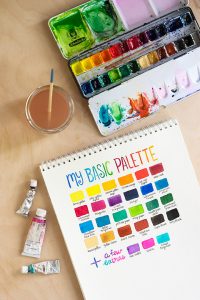
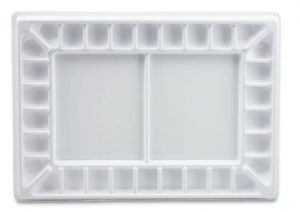
When, as an adult, I began taking watercolor classes, I was given a list of supplies. The list included brushes, paintings, paper, and a palette. I happily went down to my local craft store and picked up “the basics.” Unlike in school, I was encouraged to use tubes of paint (not cakes like in grade school) and a good quality paper. The issue of a palette wasn’t discussed a lot, but a plastic palette with wells for paint was encouraged.The idea of this kind of palette is that you squeeze paint into the little wells. The goal is to work the palette systematically, with all the reds, yellows, and blues together. Watercolor paint can be rehydrated basically endlessly. So, you can use a squeeze completely up, then squeeze some more in the same well. The problem is this:
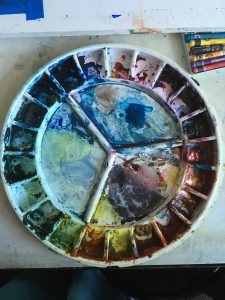
This is an old (I have no idea how old) palette. Recently, a friend downsized her collection and I took home a bunch of paper, palettes, and paint that she didn’t have a use for. The paint is still useable, but it is very dry and crusty, requiring a lot of water to moisten it and allow it to be spread onto the paper. For years I used this kind of palette, never daring to use fresh paint unless I was completely out of the well color. But what I didn’t notice is that when an artist sat down to do a demo, their preparation usually included squeezing fresh paint into the wells they intended to use, even if there was already paint in them.
The second problem with this palette is that it is dirty. I don’t mean that the palette has dirt on it; I mean the colors are no longer pure. They’ve been dipped into and smudged so that getting a pure yellow would be all but impossible.
Third, it is all but impossible to remember which well was which. Most artists work with 1-3 colors of each of the main hues. But, speaking from personal experience, color choices change over time. While I still think ultramarine blue is the best blue, I have recently come to embrace cobalt and cerulean as options. Because of this, my paintings have changed and any pretense that I could pick up a palette and touch up a painting from a year ago is laughable.
Finally, notice that my friend has added what I think is manganese blue to the “mixing” area in the center of the palette. She didn’t have a place for it and so compromised by adding it to the mixing area.
In summary, to use this palette, the artist would have to use a highly watered-down, dirty pigment and hope they remembered what color was where with mixing opportunities being limited.
So, why do we do it?
***
A few years ago, I attended a workshop by Beth Verhayden. She told the group that she doesn’t use a typical palette. Instead, she prefers to start a new palette with each painting, putting down fresh color every time she goes to paint. For this process, she does not use a welled palette, just a simply tray such as the one below.
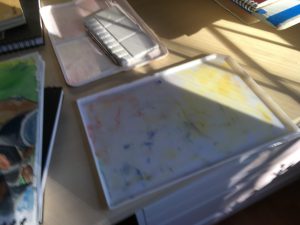
Since she presented this tip, I have found it an increasingly effective way to paint. I select my colors (I’ll write about color theory another time), put them down, and start. With this method, I put down the purest colors first and then work to the darkest, dirtiest colors.
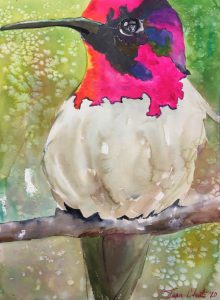
When my friend gave me the donation, I started playing with her palettes and instantly became much less satisfied with my work.
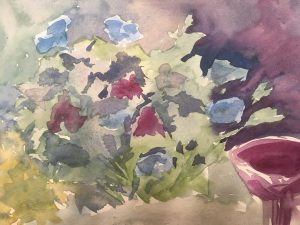
This weekend, I wanted to catch up on my work for the Roaring 20′s class. I decided to do an experiment. I would use one of the old palettes for one painting and fresh colors for the other. I ended up doing three paintings, covering the challenges for 4 weeks.
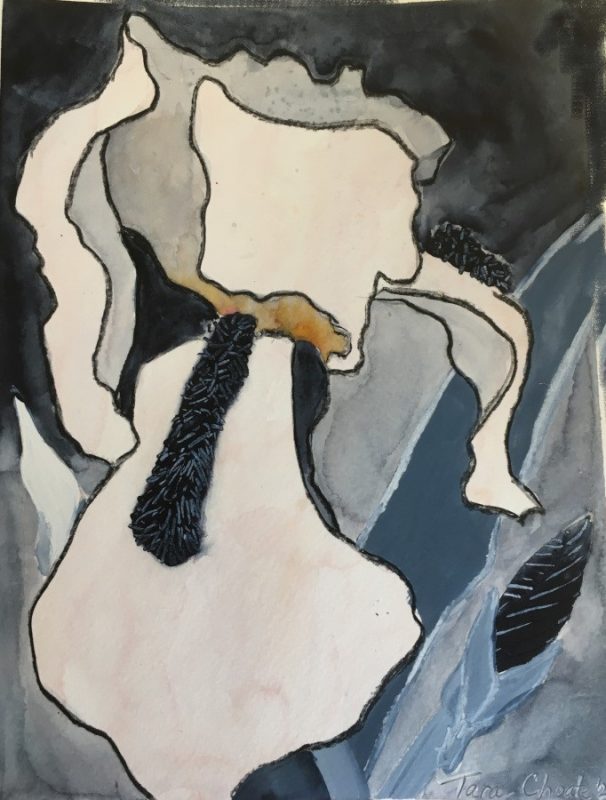
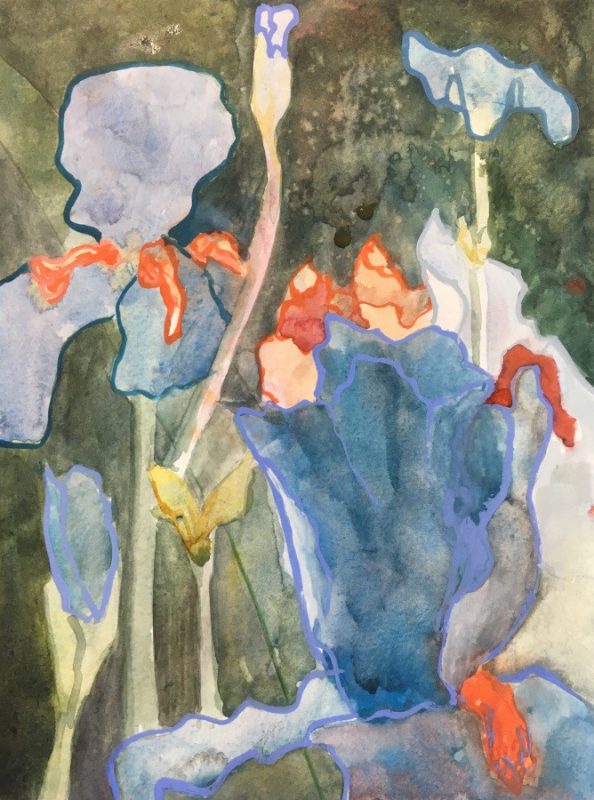
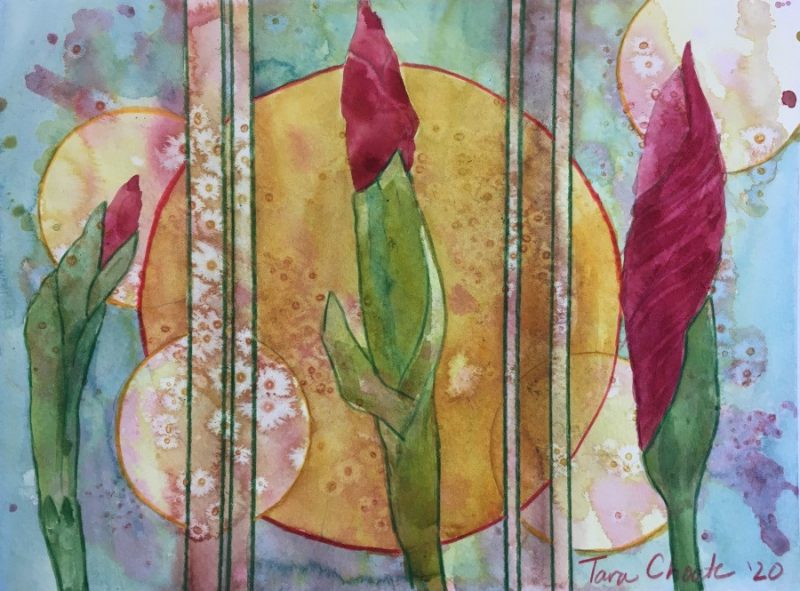
Of these three paintings, which I categorize as experiments (in other words, not “serious” paintings), the one I am happiest with is the black and white iris. I felt I got what I was wanting. “Iris garden” is the most interesting and it may be one I come back to. But the color does not have the richness and depth I would like. “Promise” turned out well, but I find that reds re-moisturize well and the greens look dirty to me.
***
It’s hard to make a blanket statement that I will do away with palettes. They are convenient and if I’m just doodling around, they are a great way to get started and not feel like I am “wasting” paint. But, after this little experiment, I’m a lot more comfortable saying I’m willing to waste a little paint to get the results I want.


Great discovery from this experiment. When I get out an ‘old’ palette, I pry those little nuggets of dried up paint out with a palette knife. I take the whole thing to the kitchen sink with a bristle brush and clean out every well with the brush until the whole thing looks new. (Radical!) Then I squeeze out new paint in each well… only after I agonize over which colors deserve to have a home in each slot. 🙂